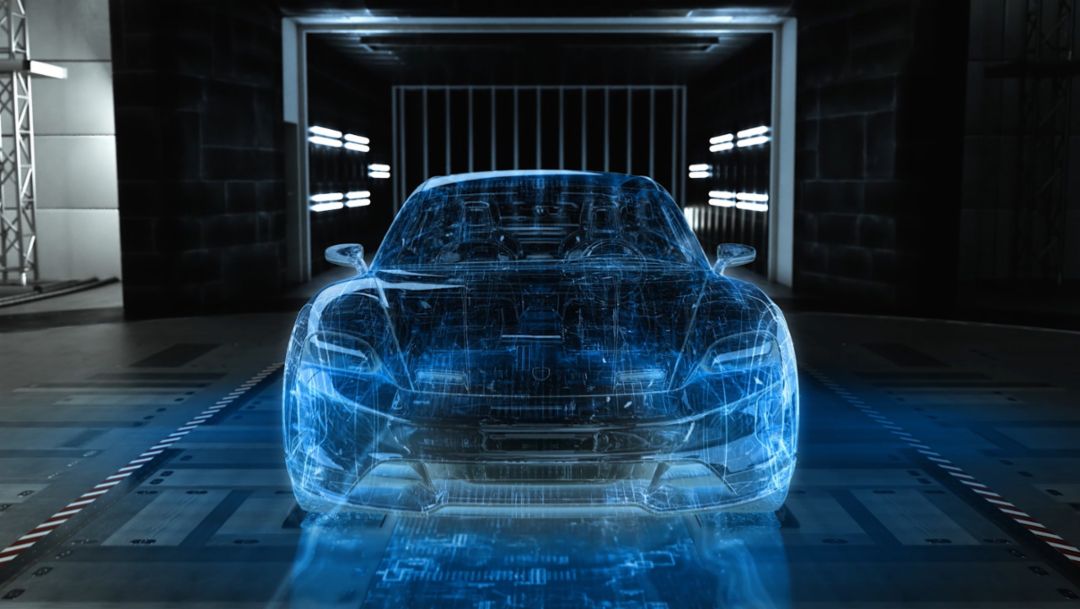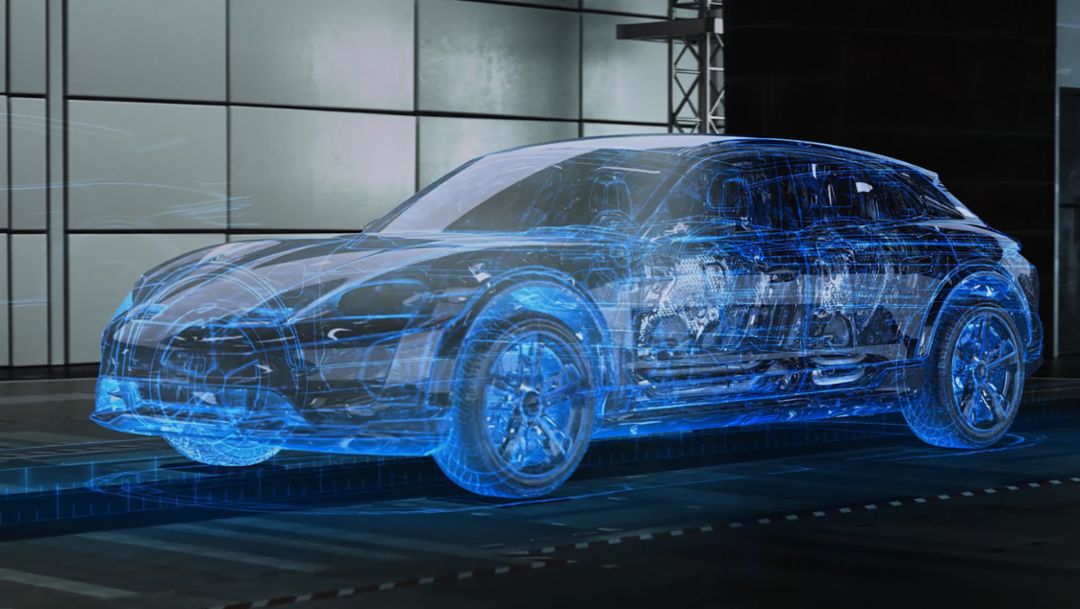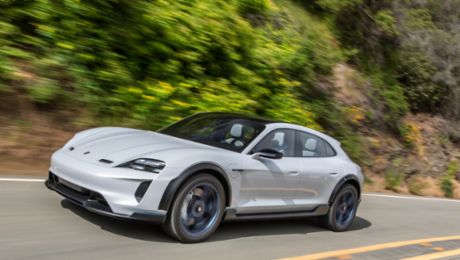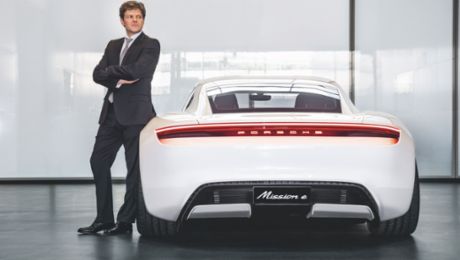The Cross Turismo will be Porsche’s second electric-only vehicle after the Taycan, which is scheduled to launch at the end of 2019. The brand’s engineers are using the most cutting-edge digital development methods, employing something known as virtual prototypes. These models make sure that a number of systems and components can be tested in a virtual environment at an early stage in the process. Extensive tests can also check these components in conjunction with other systems, even before any actual prototypes have been built. As a result, the development process for the new Taycan Cross Turismo will be quicker and more efficient. The virtual prototypes have completed more than ten million digital kilometres in total.
Digitalisation in the field of vehicle development is opening up a world of new possibilities for engineers at Porsche. At present, computers are used to design a new vehicle’s body, drive, chassis and electronics and simulate their operation. These digital prototypes are used to virtually verify the properties of the vehicle as a whole. For instance, during the current development process for Porsche’s first ever electric vehicles, a method known as network simulation is being used, enabling engineers to check factors such as interdisciplinary coordination of the energy management system in an electric car.
This has allowed design engineers to use a simulator to drive a Taycan around the Nordschleife track at Nürburgring as many as seven months prior to availability of a real-life prototype. As a result, they have been able to test and assess track performance without needing an actual vehicle. During this process, they focused particularly on electrical energy management, which plays an important role in achieving a sub-eight-minute track time on the Nordschleife. Vehicles can now therefore achieve a high degree of maturity before production even starts, which in turn increases the quality of the final product.
Virtual components act and respond in the same way as actual components and offer accurate results in terms of development. Porsche also takes advantage of hardware-in-the-loop simulations, which allow virtual vehicle parts to be tested in tandem with real ones. These efforts enable the component’s performance to be meticulously analysed and optimised at an early stage of development. Using digital prototypes to virtually verify performance means that the use of extremely expensive real-life prototypes can be optimised. When developing the Sport Turismo model in the Panamera line, for example, Porsche no longer needed to build any ‘construction-stage’ vehicles for verification purposes.
“Digitalisation is giving us the chance to become even more dynamic and sporty,” states Dr Joachim Deisinger, Head of Virtual Vehicles at Porsche. Dr Robert Meier, the Taycan Complete Vehicle Project Manager, adds: “As well as being able to simulate individual assemblies and functions, we can also fine-tune the vehicle as a whole at a much earlier stage and in a more precise way. One thing remains clear: every Porsche contains the soul of a sports car, even if it features an electric drive and was developed digitally.”
“Function on demand” and “Over the air updates”
‘Function on demand’ is a vision based on the ongoing digitalisation of the development process and the vehicles themselves. This allows customers to purchase or calibrate certain functions after they acquire their vehicle, thereby making their Porsche more unique than ever before. Used vehicle buyers also benefit as they are able to retrofit functions that the original buyer wasn’t interested in. What’s more, elements such as navigation and infotainment systems can be updated ‘over the air’ without needing to book a trip to the workshop.
Electric mobility with the soul of a Porsche sports car
Porsche is set to invest more than 6 billion euros in electric mobility by 2022. This means the company has more than doubled its previously planned expenditure (around 3 billion euros) for this business segment. Of the additional 3 billion euros, around 500 million euros will be used to develop the models and versions in the Taycan range. Porsche will be investing a good 1 billion euros in the electrification and hybridisation of its existing range of products, hundreds of millions into the expansion of its sites, and around 700 million euros in new technologies, charging infrastructure and smart mobility.
For Porsche, digitalisation is not an end in itself. As long as there is a chance of improving customer functions or streamlining processes, the company will capitalise on the possibilities offered by digital transformation. The aim is to make Porsche the leading provider of digital mobility solutions in the premium car segment. In the medium term, Porsche wants to increase its revenue in the double-digit percentage range through digital services.



